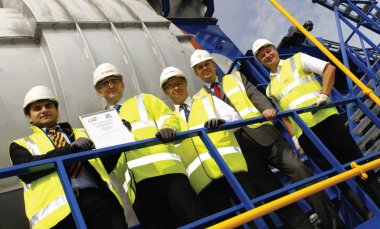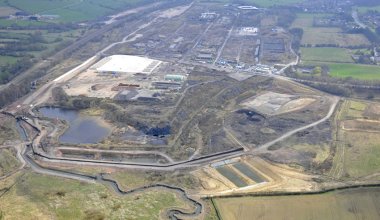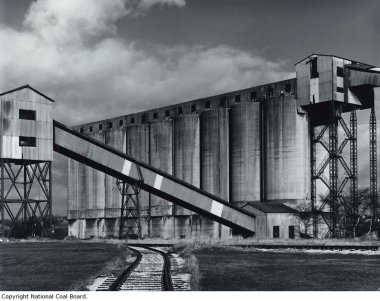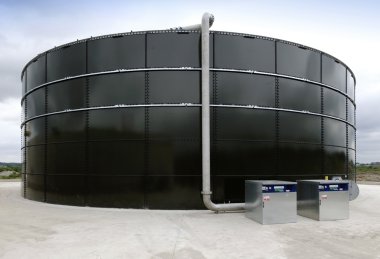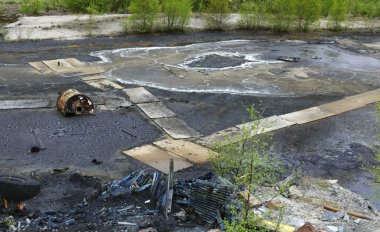The Avenue Remediation and Landscaping Project |
|
Interim Client & Outline Design Award
Project Team:
Client: emda
Design: Jacobs
Project Manager: Turner & Townsend
|
Background
The former Avenue Coking Works at Wingerworth near Chesterfield is one of the most contaminated sites in Europe, and is thought to be the UK’s biggest and most complex remediation project. The plant opened in 1956, and at the time was regarded as state of the art. As well as producing millions of tonnes of smokeless solid fuel through the carbonisation of coal, the plant processed by-products such as benzole, tar and sulphuric acid. It also produced town gas, which was supplied for domestic use in Chesterfield, and generated electricity for its own use, with the surplus fed into the national grid. Following its closure in 1992, the works lay disused until East Midlands Development Agency (emda) commenced the task of dismantling the plant structures and cleaning the site in 1999.
The facility included a waste tip and settlement lagoons for the disposal of hazardous solid and liquid wastes. Disposal in the lagoons was based on the ‘attenuate and disperse’ principle, which was an accepted technique at the time. Contamination from the site, particularly the waste tip and lagoons, is known to have polluted the River Rother that runs through the north of the site. The former plant also contaminated the underlying soils through leaks and spills from the numerous tanks, pipelines and sumps. Huge amounts of hydrocarbons, asbestos, cyanide and arsenic still contaminate the 98 ha site, the size of around 200 football pitches.
Aerial view of the site shortly following closure of the coking works |
.Aerial view of the site - summer 2010 |
Remediation strategy and masterplan
The remediation proposals involve the excavation and processing of materials using a variety of techniques. Many materials, once cleaned up, will be re-used in appropriate locations across the site. The masterplan for the site encompasses a number of end uses, including areas of native woodland, wet grassland, ponds and reed beds, parkland, sports pitches, a network of footpaths, cycleways and multi-user routes to connect the restored site to surrounding areas. An area of the site will also be allocated for a mixed-use commercial and residential development.
Due to the cocktail of different chemicals present at The Avenue, no single treatment has been found to be fully effective in removing the contamination. The remediation strategy therefore comprises a number of different techniques which, when combined, means the materials will be safe for re-use. These include:
- thermal desorption
- ex-situ bioremediation
- screening and soil washing
- concrete crushing and grading.
Good and best practice
emda required sustainability to be at the heart of the project. This was incorporated into the project through:
- site-specific risk assessments to significantly reduce the volume of material requiring remediation
- on-site treatment of contaminated materials which will almost eliminate the landfilling of wastes
- an environmental management system (EMS) to effectively manage environmental risks
- a programme of consultation and engagement to address the concerns and capture the wishes of the local community
- the creation of large areas of open space, new habitats, community sports facilities, together with a large amount of new housing and some light industrial development which will be assets for the community.
|
|
Environmental assessment and management
When operations ceased in 1992, the plant was effectively just ‘switched off’ and left derelict. As a result, when emda took ownership in 1999, there were significant immediate health, safety and environmental issues to address. These included the presence of hazardous substances (tars, acids, etc.) in pipes, tanks and other structures which were in danger of collapse, and liquid and solid hazardous wastes in tips and lagoons. One of the lagoons was thought to be in danger of collapse into the River Rother.
An environmental management system (EMS) was developed which provided a systematic means of assessing and managing such risks. This was certified to ISO14001 and later registered to the EU Eco-Management and Audit Scheme (EMAS), thought to be one of the first project-based systems to be registered to the scheme.
As part of the detailed design of the remediation works, numerous site investigations, surveys, assessments and trials were undertaken, which provided an in-depth analysis of the nature and extent of the problems. This information was further enhanced through a full environmental impact assessment (EIA) of the proposed development. Full planning permission was obtained in 2007.
Ecology and biodiversity
Following the closure of the coking plant the site was colonised by a number of protected species, such as great crested newts, water voles, bats and badgers, and others of interest, including grass snakes, kingfishers and lapwings. Extensive surveys and exclusion works were carried out to allow enabling works and remediation activities to take place. Advance habitat creation works were undertaken to provide suitable alternative areas for species translocation. According to recent surveys, there is now a nationally important population of great crested newts on the site.
The completed site will include significant new areas of wildlife habitat, primarily associated with the remediated River Rother.
...............................The water treatment plant |
Waste and materials
emda’s commitment to sustainability led to the development of a remediation solution which aligns with the principles of the waste hierarchy. This means that all materials that can technically be treated and re-used on site will be. The landform has been designed to incorporate all the treated materials, with minimum requirements to import new or reclaimed materials.
Due to previous uses of the site, only a small amount of topsoil remains. A key part of the remediation works is to manufacture more of this precious resource. All vegetation that has been cleared as part of the enabling works has been retained and will be used for this purpose.
Water resources
The River Rother, which passes through the northern part of the site between the two hazardous waste lagoons, continues to be affected by pollution from the site. This is as a result of direct discharges to the river through the site surface water drainage system, and indirectly through percolation through the ground of substances contained in the lagoons. As well as the removal of contaminated materials at source, the project includes the excavation and treatment of river sediments, both on-site and for a distance downstream.
The masterplan for the site includes a water feature, which will balance surface water flows prior to discharge to the river. On-site, the river itself will also be realigned and will include more natural meanders and backwaters, providing for habitat creation and recreational opportunities. The natural floodplain will be retained and enhanced which, along with the attenuation function of the water feature and the creation of a new flood embankment, will provide flood protection for properties and businesses downstream.
To aid in the management of water during remediation activities, a series of water-holding ponds, separated into ‘clean’ and ‘dirty’, have been created to collect surface water run-off from the site. ‘Dirty’ water will be treated in the on-site water treatment plant prior to safe discharge to the public sewer. ‘Clean’ water will be re-used in, for example, dust suppression, the cooling/quenching of thermally treated materials, the waste tip recycling plant and the operation of the water treatment plant. This will help in reducing the amount of potable water used in operations.
Public consultation
Given the high profile of the remediation project and the site itself, emda has been very proactive in engaging with the local community, regulators and other stakeholders right from the beginning. The outline masterplan was rolled out via a series of public consultation roadshows, at which views were invited on what the local community wanted the completed site to look like. Where appropriate, these ideas were incorporated into the masterplan design. Consultation is ongoing throughout the construction phase.
The latest information about the project is available at www.theavenueproject.co.uk.
A contaminated lagoon |


